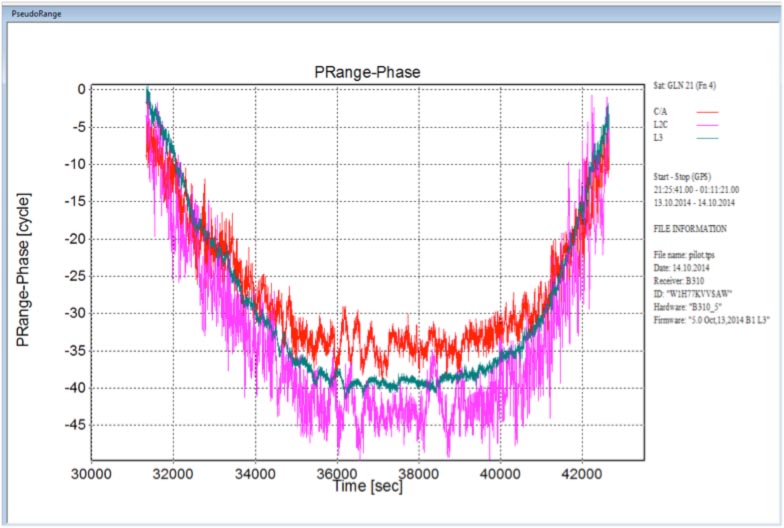 Implementation of code-Phase structures for GLONASS signals ?/?, L2C and L3
Implementation of code-Phase structures for GLONASS signals ?/?, L2C and L3Topcon Positioning Group has announced that its latest GNSS reference receiver has tracked a new signal from the GLONASS constellation.
The GLONASS-M 55 satellite was launched in June and is equipped
with an experimental payload capable of transmitting CDMA signals in the
Russian GNSS system’s L3 frequency band centered at 1202.025 MHz. According to the company, Topcon engineers successfully tracked the signal using the NET-G5
receiver during a series of recent tests at the Topcon Technology Center
in Moscow, Russia.
Topcon Positioning Group has announced that its latest GNSS reference receiver has tracked a new signal from the GLONASS constellation.
The GLONASS-M 55 satellite was launched in June and is equipped
with an experimental payload capable of transmitting CDMA signals in the
Russian GNSS system’s L3 frequency band centered at 1202.025 MHz. According to the company, Topcon engineers successfully tracked the signal using the NET-G5
receiver during a series of recent tests at the Topcon Technology Center
in Moscow, Russia.
The GLONASS-M satellite designated GLN 21(Fn 4) was launched on June 14 from Plesetsk, Russia, and became operational August 3.
A technical brief prepared by Topcon engineers Andrey Veitsel, Vladimir Beloglazov, and Alexey Lebedinsky describes the high-frequency L3 signal transmitted by the space vehicle, which includes two quadrature components: a BPSK(10)-modulate information (binary) component and a pilot signal, also BPSK(10)-modulated.
The modulating sequence of the information component is generated by a composition of the pseudorandom Kasami sequence, five-millisecond data code, and five-bit Barker code of symbol length one millisecond. The modulating sequence of the pilot component is generated by a mixture of the Kasami pseudorandom sequence and 10-symbol Newman-Hoffman code of symbol length one millisecond.
The satellite tracking was carried out in October of 2014 with a NET-G5 receiver employing an engineering version of firmware. Observation results were recorded in a standard log file. In addition, one-millisecond values of the components of the received signals were also recorded in log-files within the L3 bandwidth at rate of one kilohertz.
The use of signals in L3 band alongside L1 and L2
bands is expected to further enhance the competitiveness of the GLONASS
system, according to Ivan Di Federico, chief strategy officer for Topcon
Positioning Systems.
Using Topcon’s Vanguard and Universal Tracking technologies, the NET-G5
receiver incorporates 452-channels capable of tracking the full GNSS
signal spectrum, including modernized GPS, GLONASS, Galileo, BeiDou,
QZSS and satellite-based augmentation signals.





